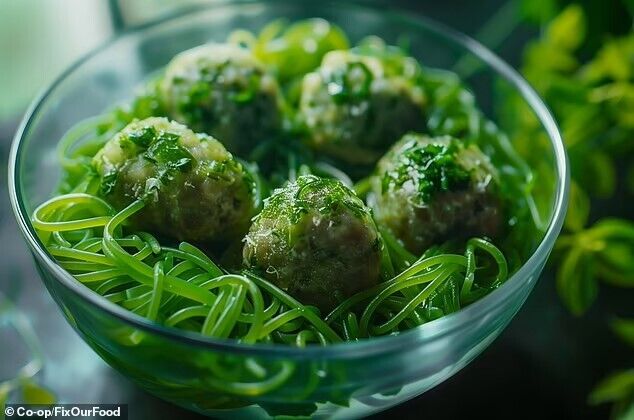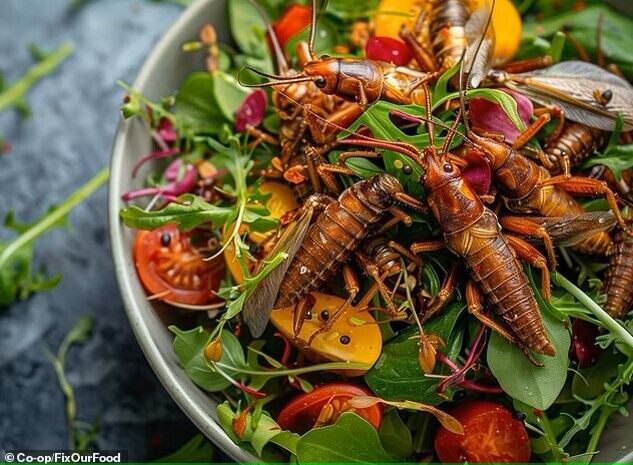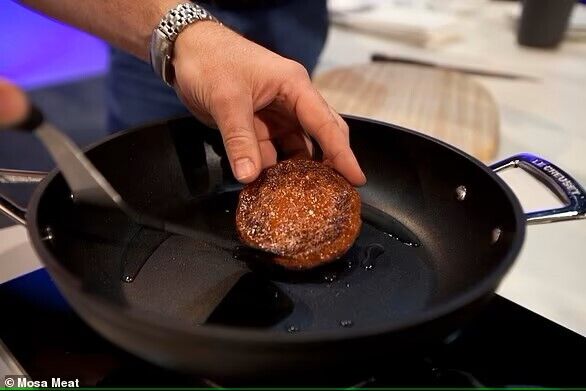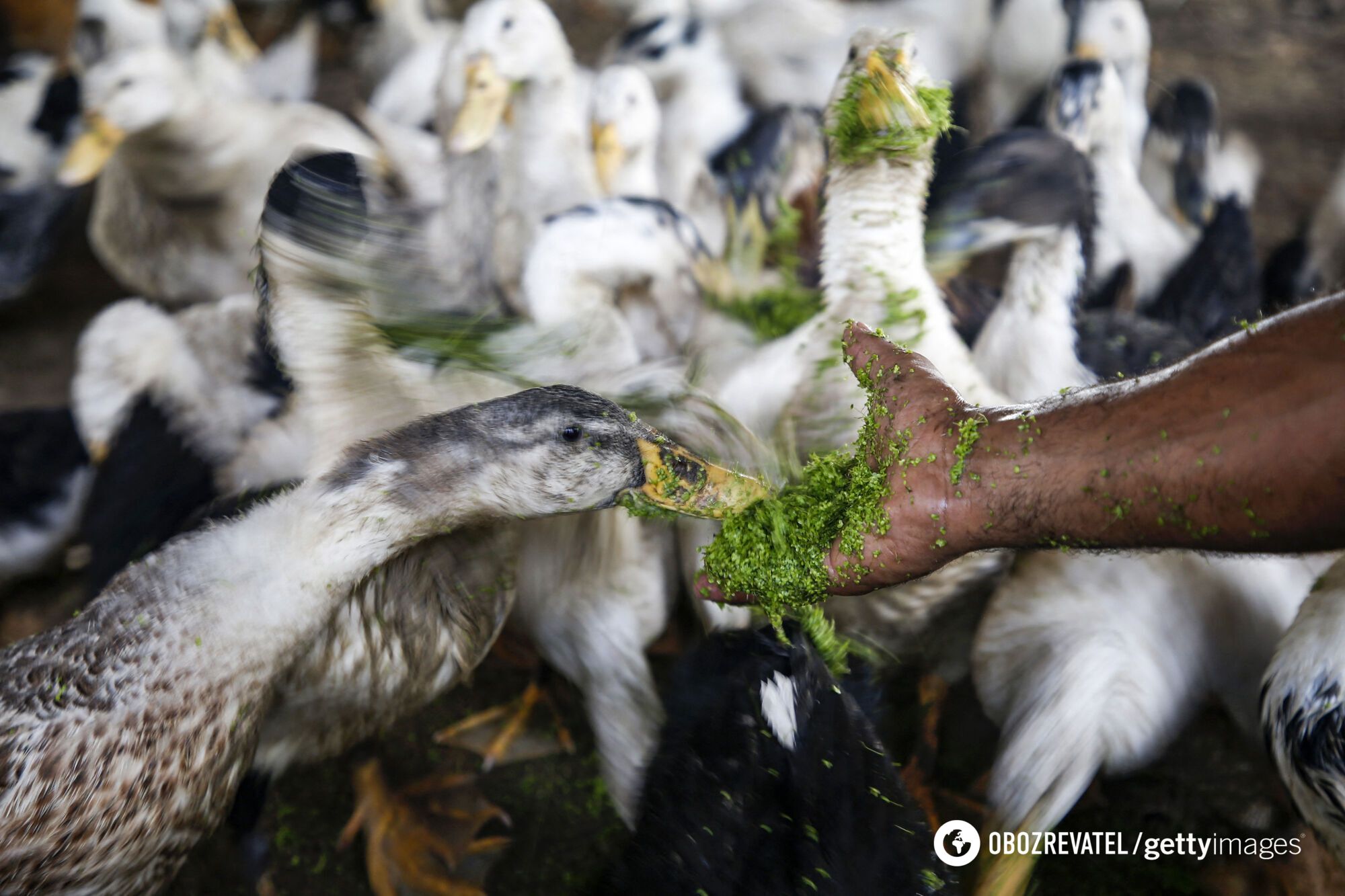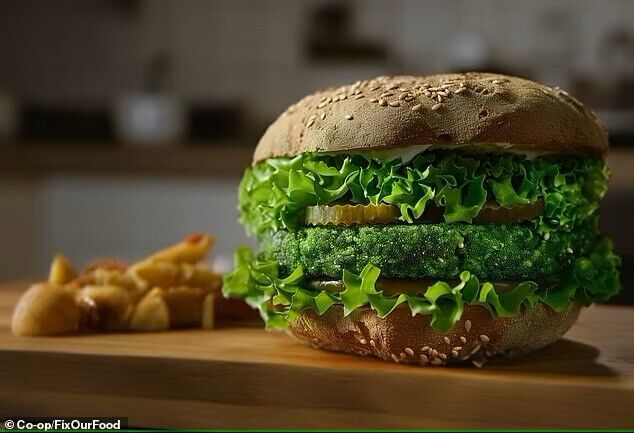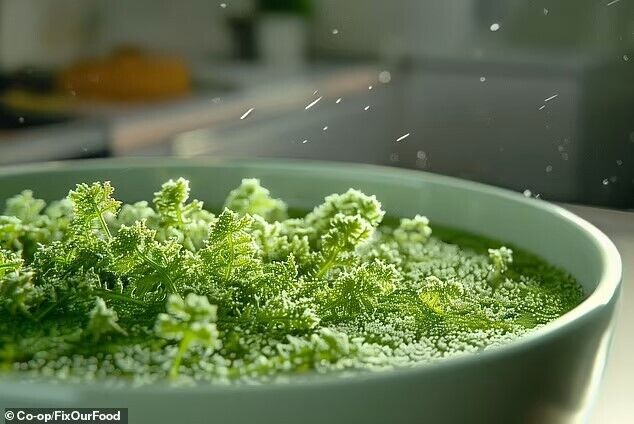News
Meat from the laboratory, salad made of worms and ants. What will food look like in 30 years and what is a "superfood"?
To understand what the menu of the future will look like, scientists used the Midjourney artificial intelligence tool. The AI is confident that in 2054 we will be eating insect salads, meat from the laboratory, and spaghetti made of ferns, and we will call them "superfoods."
Such gastronomic sacrifices will have to be made to save the planet. After all, back in 2013, the Netherlands presented the world's first hamburger grown in a laboratory from cow muscle cells, writes DailyMail.
The images of the food of the future were created using Midjourney by a team of experts from the FixOurFood research program led by the University of York and the British retailer Co-op.
"Over the past 30 years, we have seen scientific leaps and bounds towards more sustainable foods that were unimaginable to most back in 1994. From lab-grown meat to vertical farming. The future is going to change the way we eat," said Bob Doherty, director of FixOurFood.
Insects are a great alternative to meat
As research shows that red meat and dairy products are responsible for a significant share of greenhouse gas emissions, experts believe that insects will be a good alternative to the future menu.
Scientists emphasize that insects such as ants, worms, and crickets are a healthy alternative to meat. They are environmentally friendly and consume much less natural resources than livestock.
In more than 80% of the world's countries, people have long eaten more than 1,000 different species of insects. Insectivory is characteristic of many cultures in different parts of the world, such as North, Central and South America, Africa, Asia, Australia and New Zealand. This "superfood" contains a lot of protein, nutrients, potassium, magnesium, and three times the amount of fatty acids as omega-3 in salmon.
FixOurFood experts also assume that in the future, humanity will make salads from locusts, grasshoppers, and even termites. After all, US restaurants have long had cicadas on their menus, clouds of which fly over the southern states.
Scientists say that by 2054, all earthlings will have crickets on their dinner plates. "We'll eat them faster, they're the grain in the fields," said Bob Doherty.
Meat from the lab is already a reality
Although lab-grown meat still faces legal and regulatory hurdles, scientists are confident that by 2054 it will be freely available in grocery stores.
"Cultured" meat is a good alternative to the meat of real animals. It is not inferior in taste.
Back in 2013, Professor Mark Post from Maastricht University in the Netherlands presented the world's first hamburger grown in a laboratory from cow muscle cells.
Post's company, Mosa Meat, extracts cells from an animal's muscles while it is under anesthesia. The cells are then placed in a cup containing nutrients and natural growth factors. They are allowed to multiply, just like an animal, until a small sample contains trillions of cells.
These cells later form muscle cells, which naturally fuse to form primitive muscle fibers and edible tissue.
Scientists don't rule out that meat grown in the lab can be assembled into realistic shapes of hamburgers or steaks using a food 3D printer. Some experts believe that 3D food printers will very soon become a common element of household appliances in the kitchen, alongside the toaster and microwave.
Water plants will be in the top
Scientists suggest that climate change could lead to the disappearance of many favorite fruits and vegetables, including avocados. Therefore, experts advise looking for an alternative. For example, consider the little-known azole water fern.
Experts from Yale University say that azolla can capture carbon dioxide and greenhouse gas from the air and is more resistant to climate change than conventional vegetables. After all, azola is already used as animal feed.
Nitrogen can also be 3D printed into familiar shapes, such as spaghetti or hamburger patties.
And AI suggests azola to make soup.
The artificial intelligence images are part of a new Co-op report that explores "the changes in people's views on food ethics and sustainability" over the past 30 years.
The report claims that 72% of consumers have become more concerned about food sustainability in recent years, up from 54% in 1994. And in the next 30 years, this number will increase even more.
Only verified information is available on the OBOZ.UA Telegram channel and Viber. Do not fall for fakes!







